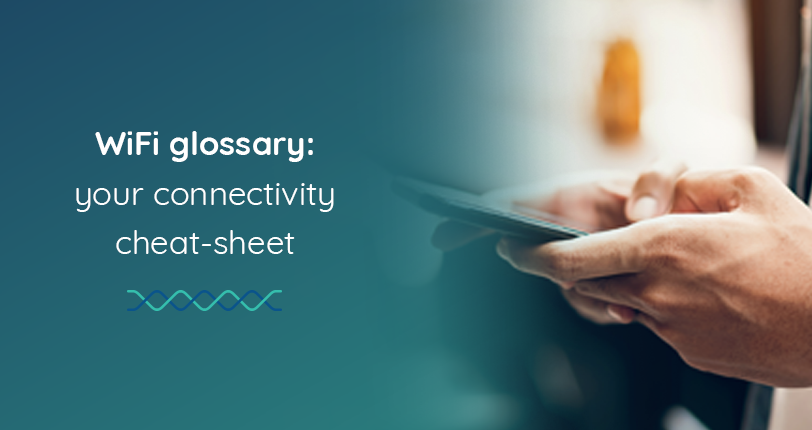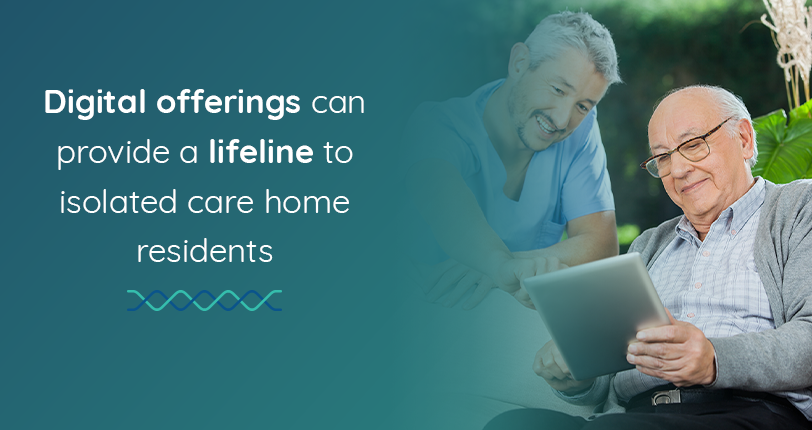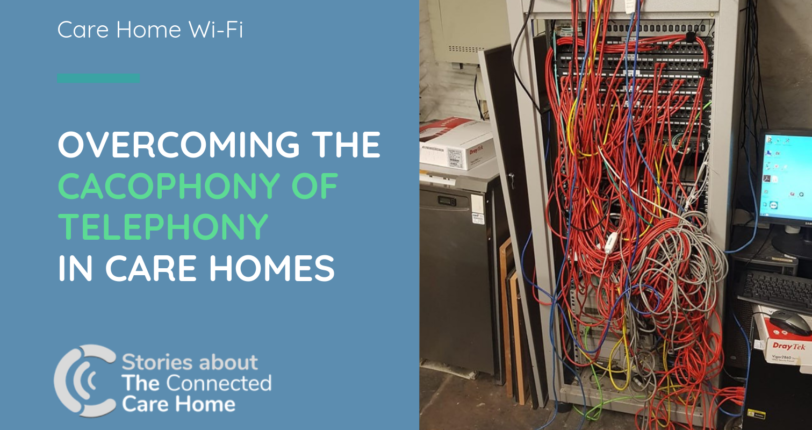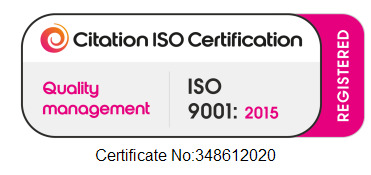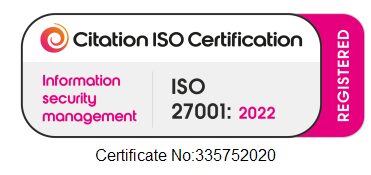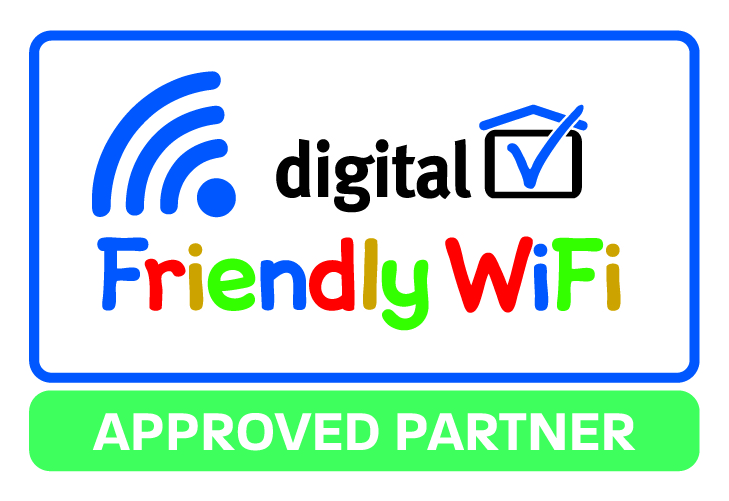With the growing popularity of WiFi and its ever-changing capabilities, it is important to understand the various terms, acronyms, and standards that are rapidly becoming a part of the lingo. To that end, we’ve put together this glossary of common terms that are used.
Connectivity
ADSL |
‘Asymmetric Digital Subscriber Line’ is a type of DSL broadband communications technology used for connecting to the Internet. ADSL allows more data to be sent over existing copper telephone lines (POTS), when compared to traditional modem lines. |
Broadband |
Any high-speed Internet access that is always on and faster than dial-up access over traditional analogue or ISDN PSTN services |
Cable Modem |
Hardware device that allows your computer to communicate with an Internet service provider over a landline connection. It converts an analog signal to a digital signal for the purpose of granting access to broadband Internet |
Dial Up |
Access a computer system or service remotely via a telephone line. |
DSL |
‘Digital subscriber line’ is the way a computer connects to the Internet at high speeds using telephone lines. |
EFM |
‘Ethernet in the First Mile’ is an ethernet leased line service that runs over copper rather than the fibre optic cable used for other Ethernet services |
Fibre Internet |
Type of internet connection that incorporates the use of fibre optic lines |
Fibre Optic |
High-speed data transmission medium. It contains tiny glass or plastic filaments that carry light beams. Digital data is transmitted through the cable via rapid pulses of light. |
FTTC |
‘Fibre to the cabinet’ is a connectivity technology that is based on a combination of fibre optic cable and copper cable |
FTTP |
‘Fibre to the Premises’ is a pure fiber-optic cable connection running from an Internet Service Provider (ISP) directly to the user’s home or business |
ISDN |
‘Integrated Services Digital Network’ is a set of communication standards for simultaneous digital transmission of voice, video, data, and other network services over the traditional circuits of the public switched telephone network. PSTN |
Mobile Broadband |
The marketing term for wireless Internet access through a portable modem, USB wireless modem, or a tablet/smartphone or other mobile device |
VPN |
‘Virtual Private Network’ is programming that creates a safe and encrypted connection over a less secure network, such as the public internet. |
Network, Hardware & WiFi
2.4 GHz and 5GHz |
5GHz provides faster data rates at a shorter distance and has 23 non-overlapping channels. 2.4GHz offers coverage for further distances, but may perform at slower speeds and nominally only has 3 non-overlapping channels. |
Access Point |
Device that creates a wireless local area network, or WLAN, usually in an office or large building. An access point connects to a wired router, switch, or hub via an Ethernet cable, and projects a WiFi signal to a designated area. |
Boosters |
Extends WiFi network coverage space by boosting or amplifying existing signals. |
Captive Portal |
Web page that the user of a public-access network is obliged to view and interact with before access is granted. |
DHCP |
Dynamic Host Configuration Protocol (DHCP) is a protocol for assigning dynamic IP addresses to devices on a network. With dynamic addressing, a device can have a different IP address every time it connects to the network. |
Ethernet |
Traditional technology for connecting wired local area networks (LANs), enabling devices to communicate with each other via a protocol — a set of rules or common network language. |
Extenders |
Connects to your network through a wired connection. |
Firewall |
network security device that monitors incoming and outgoing network traffic and decides whether to allow or block specific traffic based on a defined set of security rules |
IP address |
‘Internet Protocol’ is a unique address that identifies a device on the Internet or a local network. It allows a system to be recognized by other systems connected via the Internet protocol. There are two primary types of IP address formats used today — IPv4 and IPv6 |
IPSEC |
‘Internet Protocol Security’ or IP Security protocol, defines the architecture for security services for IP network traffic |
LAN |
‘Local Area Network’ is a group of computers and other devices that are connected together over a network and are all in the same location—typically within a single building like an office or hotel |
Leased Line |
Dedicated uncontended broadband service, meaning it is not shared with other properties in your local area |
MAC address |
Hardware identification number that uniquely identifies each device on a network. |
Mbps |
Megabits per second – a unit of measurement for bandwidth and throughput on a network. Each megabit is equal to 1 million bits |
MBps |
megabytes per second. MB is used in reference to file size, or the amount of data transferred. It takes 8 ‘bits’ of data to equal 1 ‘byte’. |
Mesh network |
Type of network topology in which a device (node) transmits its own data as well as serves as a relay for other nodes. Routers are used to provide the best and most efficient data path for effective communication. In the event of a hardware failure, many routes are available to continue the network communication process |
Modem |
Sends information between the outside world, or wide area network (WAN), and your property |
PAN |
‘Personal Area Network’ is an interconnection between different devices like smartphone, tablet, computer and other digital devices. |
PPTP |
‘Point-to-Point Tunnelling Protocol’ is a networking standard for connecting to virtual private networks, or VPNs. |
QoS |
Quality of service is the description or measurement of the overall performance of a service, such as a telephony or computer network or a cloud computing service, particularly the performance seen by the users of the network |
Repeater |
Electronic device that receives a signal and retransmits it. Repeaters are used to extend transmissions so that the signal can cover longer distances or be received on the other side of an obstruction. |
Router |
Performs the traffic directing functions on the Internet. Data sent through the internet, such as a web page or email, is in the form of data packets. A packet is typically forwarded from one router to another router through the networks that constitute an internetwork (e.g. the Internet) until it reaches its destination node. |
Unified network |
Integrates wired and wireless components, which share network elements and services where feasible, rather than existing as separate multiple networks. |
VLAN |
‘Virtual LAN’ is a subnetwork that can group together a collection of devices from different physical LANs. Larger business computer networks often set up VLANs to re-partition their network for improved traffic management. Several different kinds of physical networks support virtual LANs, including both Ethernet and WiFi. |
WiFi and WiFi |
WiFi is a family of radio technologies that are commonly used for the wireless local area networking (WLAN) of devices which is based around the IEEE 802.11 family of standards. Wi Fi is a trademark of the WiFi Alliance, |
WLAN |
‘Wireless LAN’, a network that allows devices to connect and communicate wirelessly. Unlike a traditional wired LAN, in which devices communicate over Ethernet cables, devices on a WLAN communicate via WiFi |
Short range connectivity
Beacon |
Small, often inexpensive devices that enable more accurate location within a narrow range than GPS, cell tower triangulation and WiFi |
BLE |
A variation of the Bluetooth wireless standard designed for low power consumption. |
IoT |
‘Internet of Things’, the interconnection via the Internet of computing devices embedded in everyday objects, enabling them to send and receive data. |
IPS |
‘Indoor Positioning System’ is used to locate objects or people inside a building using lights, radio waves, magnetic fields, acoustic signals, or other sensory information. |
M2M |
‘Machine to Machine’, a broad label that can be used to describe any technology that enables networked devices to exchange information and perform actions without the manual assistance of humans |
NFC |
‘Near Field Communication’ is a short-range wireless connectivity standard (Ecma-340, ISO/IEC 18092) that uses magnetic field induction to enable communication between devices when they’re touched together, or brought within a few centimetres of each other. |
RFID |
‘Radio Frequency Identification’ is a form of wireless communication that incorporates the use of electromagnetic or electrostatic coupling in the radio frequency portion of the electromagnetic spectrum to uniquely identify an object, animal or person. |
Zigbee |
Open global standard for wireless technology designed to use low-power digital radio signals for personal area networks. Zigbee operates on the IEEE 802.15.4 specification and is used to create networks that require a low data transfer rate, energy efficiency and secure networking. |
Z-WAVE |
Wireless network designed by Zensys Inc. to provide communication between devices in a home control network. Z-Wave may be used to control lights, heating and air conditioning, and appliances and home security, among other functions. |
Telephony
PSTN |
‘Public switched telephone network’ is the world’s collection of interconnected voice-oriented public telephone networks |
VOIP |
‘Voice over internet protocol’ is the transmission of voice and multimedia content over Internet Protocol (IP) networks. Historically referred to as using IP to connect private branch exchanges (PBXs), but the term is now used interchangeably with IP telephony |
Miscellaneous
AI |
Artificial Intelligence – the simulation of human intelligence processes by machines |
AR |
Augmented Reality – a technology that superimposes a computer-generated image on a user’s view of the real world, thus providing a composite view |
BYOD |
‘Bring Your Own Device’ – guests can bring any type of smart accessory into a totally new environment, such as hotel room, but still receive similar, if not the same, experience as in their own home |
CRM |
‘Customer Relationship Management’ – allows businesses to manage customer relationships and the data and information associated with them |
CRS |
‘Central Reservation System’ is a computerized reservation software used to maintain the hotel information, room inventory and rates, to manage the reservation and process. |
EPOS / POS |
‘Electronic Point of Sale’, typically capable of all tasks of a store checkout counter: payments by bank or credit cards, transaction verification, sales reporting, inventory data updates. It also facilitates customer service and inventory availability. |
GDPR |
The General Data Protection Regulation (GDPR) is a legal framework that sets guidelines for the collection and processing of personal information from individuals who live in the European Union (EU) |
GMS |
‘Guest Messaging Software’ – allows hotel operators and employees to establish a personalized communication channel with individual guests for the purpose of notifications, instructions, or service. These tools ensure optimal guest experiences and staff workflows through timely messages and responses |
HSNM |
Hotspot Network Manager (provider of Hotspot Manager captive portal) |
LBS |
‘Location-based services’ use real-time geo-data from a mobile device or smartphone to provide information, entertainment or security. Some services allow consumers to “check in” at restaurants, coffee shops, stores, concerts, and other places or events. |
Millennials |
Millennials, also known as Generation Y or the Net Generation, are the demographic cohort that directly follows Generation X. The term Millennials is usually considered to apply to individuals who reached adulthood around the turn of the 21st century. |
NVR |
Network video recorder |
OPEX and CAPEX |
CAPEX ‘capital expenditures’ are major purchases that will be used beyond the current accounting period in which they’re purchased. OPEX ‘Operational expenditures’ represent the day-to-day expenses designed to keep a company running. OPEX are short-term expenses and are typically used up in the accounting period in which they were purchased. In contrast to capital expenditures, operating expenses are fully tax-deductible in the year they are made. |
PMS |
‘Property Management System’ – a platform that enables a hotel or group of hotels to manage front-office capabilities, such as booking reservations, guest check-in/check-out, room assignment, managing room rates, and billing |
UI |
User interface (UI) design is the process of making interfaces in software or computerized devices with a focus on looks or style |
UX |
User experience is the process design teams use to create products that provide meaningful and relevant experiences to users. Works on the principles of human computer interaction (HCI). |
Voice Assistant |
Digital assistant that uses voice recognition, natural language processing and speech synthesis to provide aid to users through phones and voice recognition applications |
Wearables |
Wearable technology is a category of electronic devices that can be worn as accessories, embedded in clothing, implanted in the user’s body, or even tattooed on the skin |
